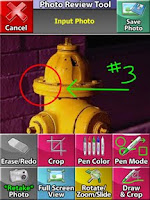HTML5 has the backing of Microsoft, Mozilla, Opera, and even Apple and Google have their own sites celebrating HTML5 (http://www.apple.com/html5/ and http://studio.html5rocks.com/ respectively). Safari (both mobile and desktop), Google Chrome and Firefox also support HTML5.
HTML5 introduces technology improvements to HTML that help mobile developers by adding geo-location, user interface tools, and access to smartphone’s cameras and sensors. HTML5 also adds media playback, offline storage, and 2D graphics capabilities. Let's look at a few of these features in more detail.
Media Playback
The days of needing Flash, Silverlight or Quicktime to play music or view a video are over. With HTML5, plug-ins are no longer needed. The HTML quotation tags can be used to directly embed media.
A recent study by EffectiveUI Software Architect Sean Christmann showed that HTML5 video even out performed Flash on mobile devices. Flash did out perform HTML5 in a number of other categories, however. (http://www.craftymind.com/guimark3/)
Google now makes Flash video on Apple devices possible via its “Swiffy” project, which converts Flash files to HTML5. The first version of Swiffy was made available on Google Labs June 30, 2011.
Offline Support
With HTML5 (and a free SQL Lite database), it’s now possible for mobile developers to store data locally on the device. Interruptions in connectivity no longer need to affect your ability to remain productive with your mobile application. Capabilities such as caching of logic and local storage of data make this possible.
2D Graphics Capabilities
The canvas element is now part of HTML5 and allows for dynamic rendering of 2D shapes and bitmap images. It is designed to make it easy to add graphics to a page without using plug-ins.
In my first article on HTML5 we received two good comments that I want to share here. The first is from mobile software guru Glenn Kletzky of Mobile Epiphany:
********
Great Intro Post to the subject Kevin. My group has been studying it at great lengths ourselves over the last few months, and your conclusions are in perfect sync with our findings. As always, you know your stuff and don't write about something until you do!
Another looming issue with HTML5 that is critical in the Enterprise is the concept of "Store and Forward". I suppose store and forward tech has been implemented in more than a few ways over the years in native apps, but the issue enterprises talk to us about almost exclusively is a store and forward capability that seems to be missing in the tech. We have heard some rumblings about “Sure it can do store and forward”, but dropping an XML file on your device is not the road enterprises seem to care about. It appears they need HTML5 to be a tech which secures and houses large amounts of highly variable data (BLOB’s, point data, etc) in a secure, encrypted and powerful database. Large stores of highly secure and encrypted data are often required to be successful in the field when connectivity is intermittent at best. And as mobile storage continues to grow (SD to 2 Gigs, then SDHC to 32 gigs, now SDXC heading toward 2 TBs over the next year or 2!) this really allows for some amazing capabilities in the field for Store and Forward requirements. And yet I don't hear much in HTML5 on that front.
I would love to know more about what you learn with regards to HTML5 and this issue.
Great writing as always Kevin.
Glenn Kletzky
********
Brian Blankenship writes:
Nice post. Other limitations of HTML5, beyond APIs such as GameCenter and In-app purchase, are no access to key device features such as the camera, videocamera, accelerometer (to name a few), and future device features yet to be invented. In addition, HTML5 apps, especially via a mobile browser, just don't create the "attachment" a user has with a native app - be it due to user experience or be it due to practical matters such as having to navigate through a long list of browser bookmarks, that over time would be ignored. Finally, there is the monetization component - for browser apps, as opposed to distributing through an app store for payment, how do developers get paid?
********
I recently interviewed Tom Slee from Sybase on HTML5 and how its data storage capabilities compares and contrasts to Sybase's embedded databases. You can read the article here.
Please comment here and share your thoughts and knowledge about HTML5!
Upcoming Events
Critical Requirements for Mobile App Development: Agility and Speed Strategy, Process, and Tools to Accelerate Mobile Development, July 21, 2011
Mobile Tablet Trends in the Enterprise featuring Samsung Mobile - July 28, 2011
Whitepapers of Note
The Business Benefits of Mobile Adoption with SAP Systems
ClickSoftware Mobility Suite and Sybase Mobility Solution
Mobile Adoption Among Gas and Electric Utilities
Mobile Adoption in Life Sciences
Mobile Adoption in Oil and Gas
Networked Field Services
Recorded Webinars of Note
3 Critical Considerations for Embracing Mobile CRM
The Future of Enterprise Mobility
The Latest m-Business Trends and How the Onslaught of Mobile Devices Affects Development Strategies
The Real-Time Mobile Enterprise: The Benefits of Rapid, Easy Access
Syclo and SAP Deliver Mobile Apps on Sybase Unwired Platform
You can follow me on Twitter @krbenedict and read my blog, Enterprise Mobility Strategies.
*************************************************************





